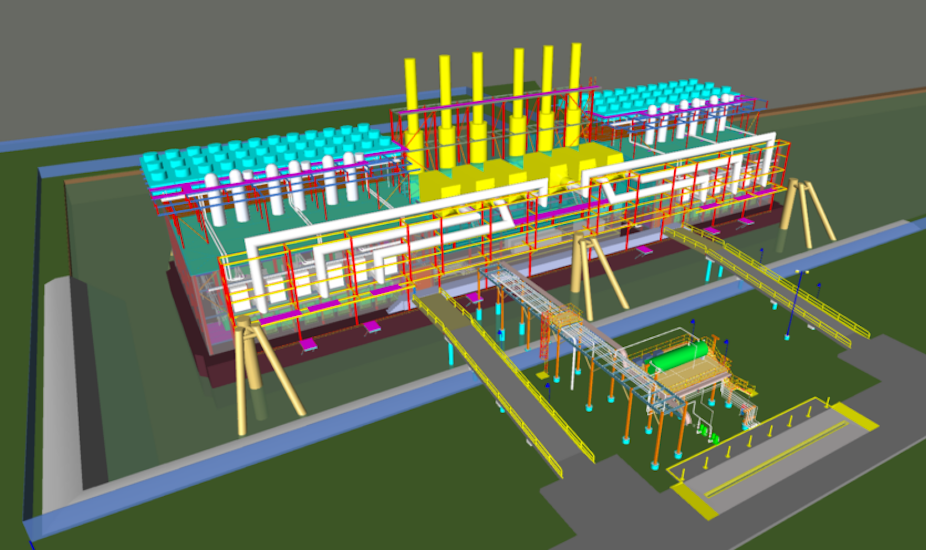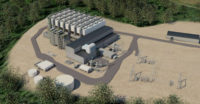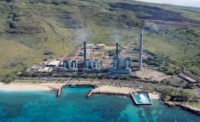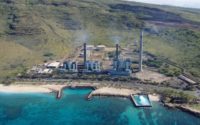New Orleans-based utility Entergy Louisiana seeks state regulators' approval by early July to build a 112-MW floating natural gas-fired power plant on a barge near an existing substation in Port Fourchon, La., that it claims could burn up to 25% hydrogen, with modifications.
Entergy asked the Louisiana Public Service Commission to make a decision in 120 days, but with the approval process just starting, a final decision in Entergy’s requested time frame is not likely, said a commission spokesman.
The estimated $411-million Bayou Power Station project, including transmission upgrades, would be designed and built by Grand Isle Shipyards under a fixed-price, fixed-schedule contract, with Bollinger Shipyards building the barge, Entergy says. It is expected to come online in the second half of 2028.
Entergy did not bid the project due to its unique characteristics, it told the commission. Given the need, location and type of resource, a request for proposals "would not be necessary to identify the lowest reasonable cost alternative,” the utility added.
Plans call for six Wartsila natural gas-fired reciprocating internal combustion engines that can start up without feed from the electric grid, known as “black start capability,” and a microgrid to serve the area if power from the grid is out of service. The project also includes a transmission interconnection and substation expansion.
The six engines, mounted on the deck of a barge, would be fully enclosed and weather tight, says the utility, with the barge and mooring system designed for a 100-year storm and able to withstand 178-mph wind gusts and an 18-ft tide surge.
Gary Dickens, Entergy vice president of capital projects, said in testimony that a floating power plant has advantages. The cost to elevate existing land or build the plant on a structure high enough to allow for similar surge protection “is cost prohibitive,” he said. The floating barge can rise and fall in place with the tide or storm surges. Also, the power plant could be moved to another location if needed elsewhere, he said.
Weighing Project Pros and Cons
Entergy considered construction of added transmission and substation upgrades as an alternative, but said the current project is on par with other options considered, particularly with major challenges in building transmission through the area’s marshlands and open water.
Several environmental and user interest advocacy groups, including the Louisiana Energy Users Group, Alliance for Affordable Energy and Southern Renewable Association, have notified the commission they will “intervene” in the filing to comment on the project. The Sierra Club told ENR it also plans to intervene but declined to elaborate on its position. A date for interveners to file comments has not yet been set.
But in comments to an environmental advocacy publication, Alliance executive director Logan Burke raised concerns about utility reliance on fossil-fuel technology that will worsen climate change. The online publication also said a $210-million gas power plant built in 2020 by an Entergy affiliate in New Orleans with claimed quick start ability took almost three days to operate after Hurricane Ida in 2021.
The project would directly address needs of critical fossil-fuel infrastructure customers at Port Fourchon, which service 90% of all deepwater oil and gas activity in the Gulf of Mexico and support more than 18% of U.S. supply through oil services and pumping infrastructure, according to Entergy. The area is currently served by one transmission line after two previous storms damaged another line that was then retired.
The area includes the Louisiana Offshore Oil Port, the only deepwater oil import facility that is connected to 50% of U.S. oil refineries, Entergy claimed. The project will add a resilient power source to the state grid and enable storm restoration options with fast ramp-up and ramp-down capabilities, it said.
Floating power plants have been used since the mid-1990s, but they are having a resurgence, says Hamed Hossain, who runs Siemens Energy's floating power plant business that is building combined-cycle turbines on barges with power output ranging from 150 MW to 450 MW.
According to the company, the power plant units are equipped with efficient and low emissions technologies and can be installed on various types of floating devices such as simple barges, oil and gas platforms and floating production and offloading units.






Post a comment to this article
Report Abusive Comment